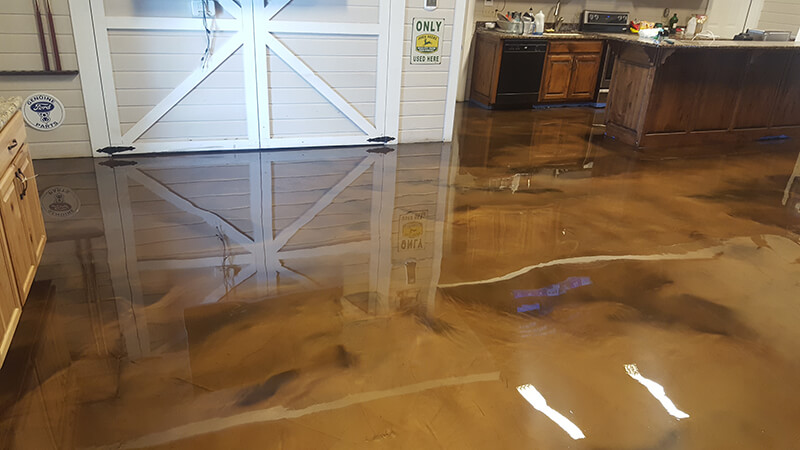Ultimate Guide to Setting Up Resilient Epoxy Floors in Residential Spaces
When it comes to changing residential rooms with sturdy epoxy floors, a systematic strategy is essential. There's one element often forgot that can significantly influence the durability and quality of the epoxy floor.
Selecting the Right Epoxy Floor Covering System
Choosing the suitable epoxy floor covering system is a vital step in ensuring durability and performance in household areas. Epoxy flooring offers longevity, easy maintenance, and visual appeal, making it a preferred choice for household applications. When picking an epoxy system, aspects such as the kind of epoxy, degree of resilience called for, design choices, and budget plan constraints must be thought about.
There are numerous kinds of epoxy flooring systems available, consisting of water-based epoxy, solvent-based epoxy, and 100% strong epoxy. Water-based epoxy is very easy and green to apply, making it suitable for household usage. Solvent-based epoxy provides an extra long lasting surface however emits strong smells during installment. 100% strong epoxy is one of the most durable alternative, suitable for high-traffic locations in property spaces.

Preparing Your Residential Space
When considering the setup of long lasting epoxy floorings in domestic rooms, adequate preparation of the area is fundamental to making certain a successful and durable application. The very first step in preparing your domestic room for epoxy flooring is to completely clean the surface.
Following, it is essential to repair any cracks, openings, or imperfections in the flooring. These should be loaded and leveled to produce a smooth and even surface area for the epoxy covering to be applied. Additionally, check for moisture concerns as too much moisture can create the epoxy to bubble or peel. Attend to any type of wetness issues prior to waging the setup.
Last but not least, guarantee proper ventilation in the area during the installment process to enable the epoxy fumes to dissipate. Ample preparation of the residential area sets the foundation for a successful epoxy floor covering application.
Applying Epoxy Covering
To begin the procedure of using epoxy coating, completely blend the epoxy resin and hardener according to the manufacturer's directions. It is vital to comply with the recommended mixing proportions precisely to make sure the epoxy treatments correctly and accomplishes maximum resilience. Once the epoxy elements are mixed, put the combination onto the ready flooring surface area in a bow pattern.
Making use of a roller with a medium-nap cover, spread out the epoxy uniformly over the flooring, working in manageable areas to prevent the epoxy from drying as well quickly. Make sure to back-roll the applied epoxy to remove any type of puddles or uneven areas, guaranteeing a smooth and consistent coating.

Permit the epoxy covering to cure according to the producer's instructions before waging any type of further actions to make certain a durable and resilient surface.
Guaranteeing Proper Treating and Drying
Efficient healing and drying procedures are important to accomplish the desired durability and durability of epoxy floorings in domestic rooms. Appropriate healing involves offering the epoxy covering adequate time to harden and bond totally to the substratum.
Additionally, guaranteeing ample ventilation have a peek at this website in the room is essential for the drying out procedure. Proper air flow helps the epoxy finishing to treat consistently and stops any type of concerns like bubbling or uneven drying. Keeping consistent temperature level degrees within the healing area is additionally important, as severe temperatures can adversely influence the treating procedure. It is recommended to follow the producer's guidelines for healing and drying times to assure optimum outcomes and make best use of the toughness of the epoxy flooring in property settings.

Extending and preserving Epoxy Flooring Life-span
Proper maintenance methods play a critical role in prolonging the life expectancy of epoxy floorings in property settings. Routine cleansing is my website vital to protect against dirt and particles from scratching the surface area of the epoxy flooring.
To additionally protect the epoxy floor, consider applying a brand-new overcoat every couple of years, specifically in high-traffic areas. This will assist revitalize the appearance of the floor and offer an extra layer of protection versus deterioration. In instance of any type of spills, immediately tidy them as much as protect against discoloration and potential damages to the epoxy. By adhering to these maintenance ideas, home owners can guarantee their epoxy floorings continue to be sturdy and visually appealing for many years to find.
Final Thought
In conclusion, mounting resilient epoxy floors in residential rooms calls for mindful consideration of the epoxy floor covering system, extensive preparation of the room, appropriate application of the epoxy coating, and making sure appropriate curing and drying out procedures. By adhering to these actions diligently, house owners i was reading this can attain a resilient and visually appealing epoxy floor that enhances the durability and aesthetics of their space.
When it comes to changing residential spaces with sturdy epoxy floors, a methodical approach is vital. When picking an epoxy system, elements such as the type of epoxy, degree of sturdiness required, design choices, and budget plan constraints must be taken into consideration.
There are numerous kinds of epoxy flooring systems available, including water-based epoxy, solvent-based epoxy, and 100% solid epoxy.When thinking about the installation of long lasting epoxy floors in residential spaces, appropriate prep work of the area is fundamental to ensuring a effective and lasting application.To start the process of using epoxy finishing, completely blend the epoxy material and hardener according to the producer's directions.